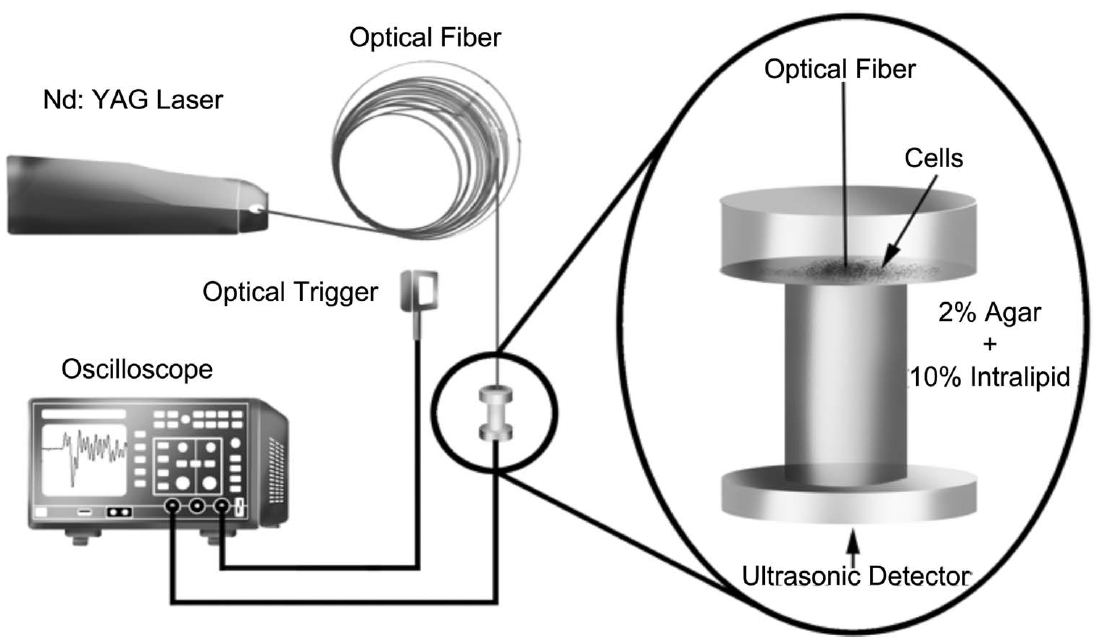Photoacoustics technique detects small number of cancer cells
March 29, 2012
The inability to detect the presence of only a few cancer cells severely limits detection of the earliest stages of cancer. Current detection techniques use ionizing radiation, which is unable to detect just a few cancer cells in the million cells per millimeter in tissue.
Now University of Missouri-Columbia and Mexico’s Universidad de Guanajuato researchers have used pulsed photoacoustic techniques — which combine the high optical contrast of optical tomography with the high resolution of ultrasound — in experimental attempts to detect individual cancer cells.
They demonstrated the ability to identify from 2 to 7 melanoma HS936 cells in vitro (in the lab).
More research is still necessary, the researchers say, to be able to properly use photoacoustic techniques to recognize different cancer cell types in vivo (inside the human body) or in blood or tissue samples.
Ref.: Rafael Pérez Solano, et al., An experimental and theoretical approach to the study of the photoacoustic signal produced by cancer cells, AIP Advances, 2012; [DOI:10.1063/1.3697852] (open access)
